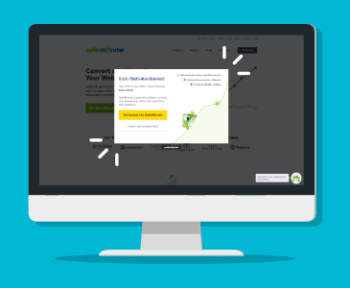Social is a fantastic place for consumers and brands to connect, as long as they remember one thing: social media can provide the first and last impression of your brand, so both should be good. Many businesses adopt a brand-centric focus when embarking on the journey of their data analytics and this can be risky. Let’s see why!
Social media analytics is a term that is often misunderstood. Don’t worry though – this post will help you avoid this. What is this important business tool, we will analyze it; That’s not what it is; Why you should use it; Otherwise how!
Social media provides a large group of mature consumers for brand communication. But social media is not about brands. It’s about sharing their lives with people they know based on common interests and they resent interruptions, especially when someone tries to sell them something!
Here social media analytics comes into play.
Table of Contents
What is Social media Analytics?
The video below explains social media analytics for example.
Social media analytics is the ability to collect and find meaning from data gathered from social channels to support business decisions – and to measure the performance of actions based on those decisions via social media.
Social media analytics is more comprehensive than metrics such as likes, follows, retweets, previews, clicks, and impressions collected from different channels. It also differs from reporting provided by services that support marketing campaigns, such as LinkedIn or Google Analytics.
Social media analytics uses specially designed software platforms that work similarly to web search tools. Data about keywords or topics are retrieved through search queries or web ‘crawlers’ that span the channels. Pieces of text are returned, loaded into a database, classified, and analyzed to yield meaningful insights.
How is Social media analyzed?
How do you know if your social media marketing efforts are working? These seven ways to analyze your social media marketing efforts will help you understand what is working for you, what is not working, and what needs to change. So, let’s have a look at this:
1. Engagement
Do your followers respond to your social media shares with their own comments? How many comments do you get on average for each post? Which post has more comments? What if you get off-topic? What happens when you are on the topic? These questions can be answered with your social media platform dashboard analytics.
2. Choice
What is the response when you post something? Do people like dislike or like your posts? Does it make them happy or annoying? Looking at the likes in each comment and how they are added to your entire page is a good way to find out if you are connecting with the right people. learn about the social media marketing process.
3. Share
What percentage of your posts are shared? Do you ask people to share? When posts are shared at a high rate, it is a good indicator that you are in touch with your audience. When someone does not share a post, it’s not really breaking the ground or they are not thinking about it, so make sure you ask people to share. Also, learn about Lookalike audience.
4. Development
It’s easy to tell if you are growing with the number of likes on your page. If you can do analysis to find out where new people are coming from, it will make your efforts more effective because you can repeat what you are doing and stop what you are not doing. Can.

5. Reach out
Often, especially when you boost a post, your post (meaning how many people will see the post) is an important indicator of the effectiveness of your post. For example, if it reaches 1000 people but there is no feedback, likes, or comments, the content may not be relevant to your audience.
6. Click
How many people click on your landing page and how many people see it is a great indicator of whether you are still impressing your audience. If you do not have many clicks and conversions, the landing page may not be very accurate compared to the information that caused them to click.
7. Mention
Who is talking about you, what are they saying, and where are they saying that? Social media is a great way to check the health of your business and the barometer of others’ thoughts about your business. You can set up Google Alert to notify you if anyone says anything about your niche, industry, or your name.
Each social media platform has its own way of showing you its analytics, but each one has good analytics where most of the things mentioned here can be shown without buying specifically. This is one of the many things that makes social media marketing so effective.
Why are social media analytics important?
IBM explains with social media coverage: “News about a great product spreads like wildfire. And news about a bad product – or a bad experience for a customer service representative – spreads just as fast.” Consumers are now attracting companies for their brand promises and sharing their experiences with friends, colleagues, and the public.
Social media analytics can help companies address and use these experiences:
- Spot trends related to submissions and brands
- Understand the conversation – what is being said and how it is being received
- Get customer sentiment towards products and services
- Gauge response to social media and other communications
- Identify high-value features for a product or service
- Find out what competitors are saying and its impact
- Map how third-party partners and channels affect performance
- Not only do they use these insights to make strategic adjustments such as resolving angry tweets, but they also help make strategic decisions. In fact, IBM has found that social media analytics is now “bringing into the main debate about how businesses develop their strategies”.
These strategies affect a wide range of business activities:

Product Development – A comprehensive analysis of Facebook posts, tweets, and Amazon product reviews can provide a clear picture of customer pain points, rehab needs, and desired features. Trends can be identified and tracked by streamlining the management of existing product lines as well as guiding new product development.
The Customer Experience-IBM study “Organizations are shifting from product-based to experience-based businesses.” Behavior analysis is applied on social channels to make customers happy and to use subtle moments to increase loyalty and lifelong value.
Branding – The largest focus group in the social media world. Natural language processing and sentiment analysis can constantly monitor positive or negative expectations to maintain brand health, improve stabilization and develop new brand features.
Competitive Analysis – It is always important to understand what competitors are doing and how customers are responding. For example, a competitor may indicate that they are exiting a particular market, creating opportunity. Or the rise of positive references for a new product could alert companies to market turmoil.
Operational Efficiency – An in-depth analysis of social media can help companies improve how they measure demand. Retailers and others can use that information to maintain inventory and suppliers, reduce costs and optimize resources.
Hope! You find this content helpful. Don’t forget to subscribe and share. Thank You.






1 Comment